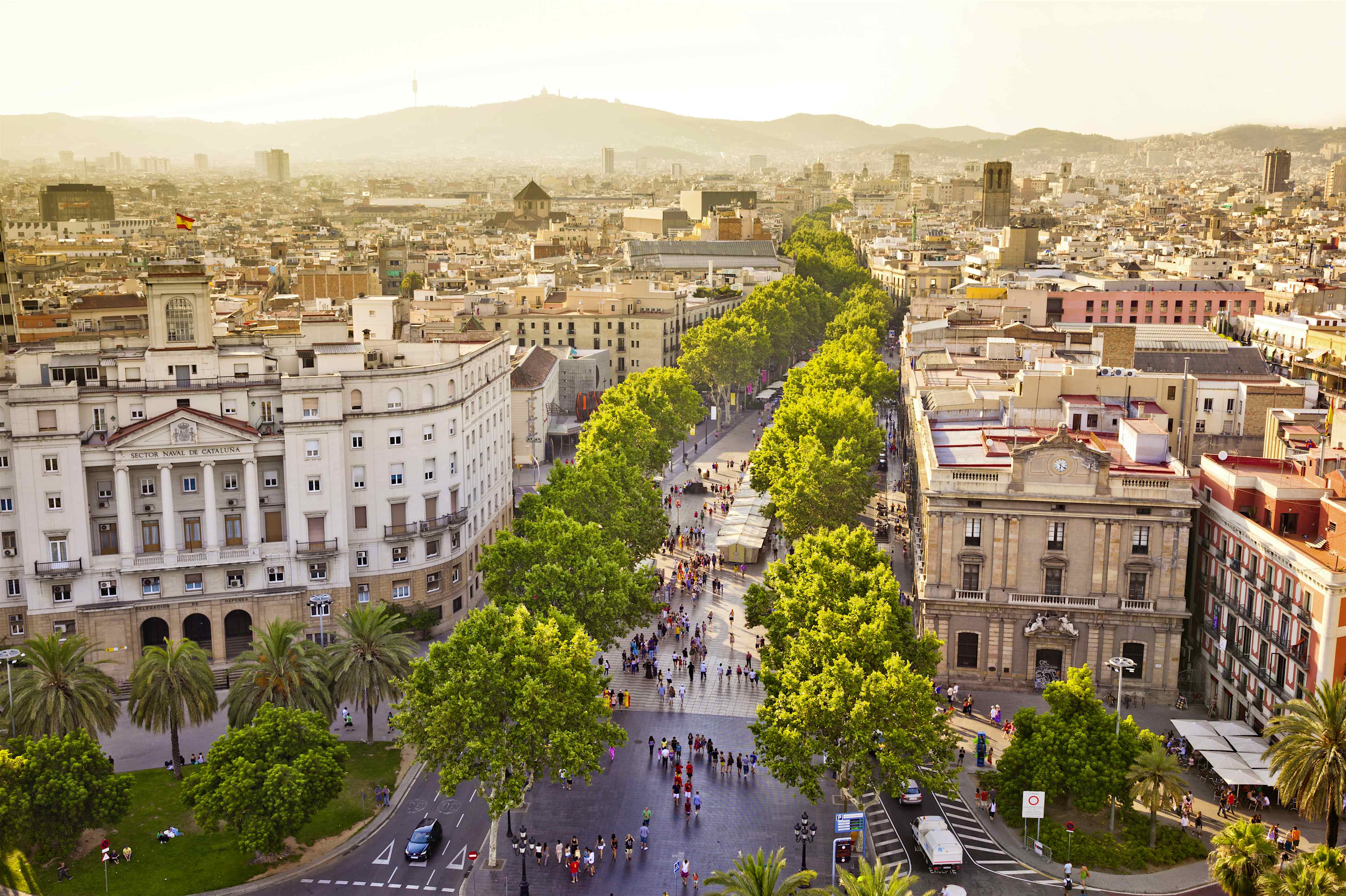The La Rambla Spain

Barcelona, the stunning capital of Catalonia, is a city that is rich in history, culture, art and architecture, offering a unique blend of Mediterranean sun, innovative gastronomy and cosmopolitan chic. One of the most iconic landmarks of this Spanish city is La Rambla, a tree-lined pedestrian street that stretches for 1.2 kilometers from Plaça de Catalunya to the Christopher Columbus Monument.
La Rambla was originally a sewage-filled sandbank that the Moors turned into an open sewer. However, in the mid-18th century, it was renovated and turned into a tree-lined avenue, later becoming one of Barcelona’s most famous promenades.
Today, La Rambla is a bustling street that is filled with street performers, souvenir vendors, and flower stalls, and lined with cherry trees, plane trees, and poplars, providing shade for the visitors during the hot summer months. The street is filled with art, music and history, and a vibrant hub of activity.
La Rambla also acts as a central artery to the historic Barri Gòtic, or Gothic Quarter, which is a maze of narrow streets and alleyways that lead to hidden squares and charming corners that date back to medieval times.
The entire street is dotted with historic landmarks and attractions, such as Teatre Liceu, a world-famous opera house, and Palau de la Virreina, an 18th-century Baroque palace that now hosts art exhibitions and cultural events.
Another famous landmark is the Font de Canaletes, a fountain that is famous in Barcelona for being the spot where FC Barcelona fans traditionally celebrate the team’s victories. It is believed that whoever drinks from the fountain will always return to Barcelona.
La Rambla is also home to the iconic Mercat de la Boqueria, a glistening, multi-colored food market that has been operating since the 13th century. Here, you can savor the flavors of the Mediterranean, with traditional Catalan dishes such as paella, butifarra and crema catalana, as well as fresh seafood, charcuterie, nougat, fruits and vegetables, olives and snacks.
The market is a feast for the senses, selling a wide range of exotic produce and colorful goods that showcase the culinary heritage of Catalonia. It is the ideal place to stop and sample the local cuisine or indulge in some retail therapy.
For those who want to delve deeper into the rich history of La Rambla and its surrounding areas, there are several walking tours that reveal the stories behind the various landmarks and monuments. These tours provide an excellent way to discover the hidden gems of Barcelona and learn more about its fascinating past.
History of La Rambla
La Rambla has a long and fascinating history that dates back to medieval times when the city was under Moorish rule. Originally a sewage-filled sandbank, the area was later renovated and turned into a tree-lined promenade that became the most famous street in Barcelona.
The name for the street comes from the Arabic word Ramla, which means dry bed. The fountains that were installed along the promenade became a popular meeting place, and the street became an important center for trade and socializing.
During the Spanish Civil War, La Rambla became a gathering place for refugees, and the street was heavily bombed by fascist air raids. Later, during the Franco years, it was a focal point for anti-regime protests and demonstrations.
Today, La Rambla is a cultural hub that represents the very heart and soul of Barcelona. From its vibrant street life to its historic landmarks and attractions, the street offers visitors an unforgettable experience that captures the essence of this unique and beautiful city.
Travel Tips
If you’re planning a trip to Barcelona, there are several tips that can help you make the most of your visit to La Rambla:
- Visit early in the morning when the street is quieter and before the crowds arrive.
- Watch out for pickpockets – La Rambla is notorious for its petty crime.
- Try the local cuisine at the Mercat de la Boqueria.
- Explore the narrow alleys of the Gothic Quarter for a glimpse into the city’s rich history.
- Take a guided walking tour to learn more about the landmarks and history of La Rambla.
- Stay in a nearby hotel and enjoy the nightlife and attractions that La Rambla has to offer.
Barcelona is a city that is full of surprises and delights, and La Rambla is no exception. Whether you’re interested in history, culture, food or just enjoying the lively street life, La Rambla has something for everyone.
So, the next time you find yourself in this beautiful and vibrant city, don’t forget to take a walk down La Rambla and discover the heartbeat of Barcelona.


Post a Comment for "The La Rambla Spain"